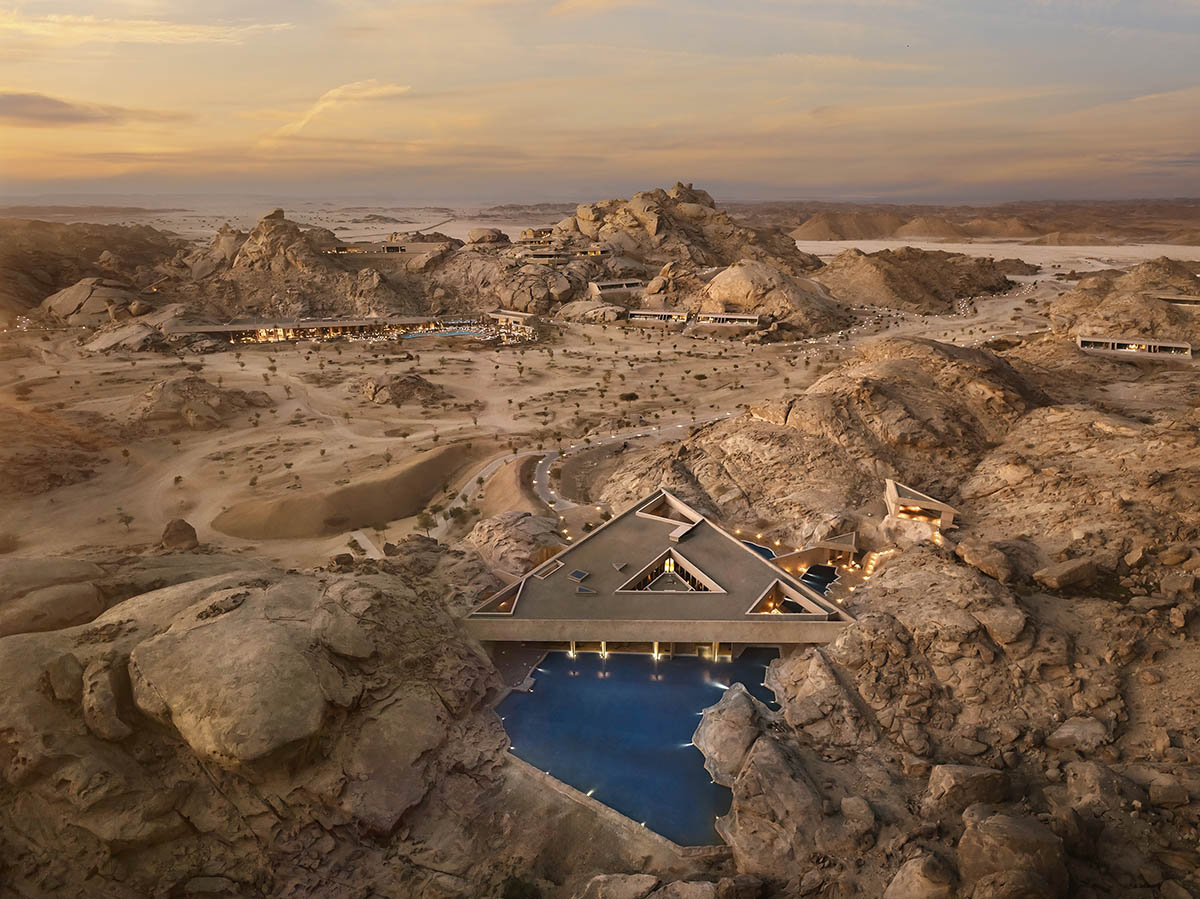Oppenheim Architecture carves out a resort inside the Hejaz Mountains in Saudi Arabia
Submitted by WA ContentsOppenheim Architecture carves out a resort inside the Hejaz Mountains in Saudi Arabia Saudi Arabia Architecture News - Jan 16, 2025 - 15:22 html PUBLIC "-//W3C//DTD HTML 4.0 Transitional//EN" "http://www.w3.org/TR/REC-html40/loose.dtd"Miami, Basel, and Tirana-based architecture firm Oppenheim Architecture has carved out a luxury resort inside the Hejaz Mountains inSaudi Arabia.Named Desert Rock, the new resort was completed as a component of the Red Sea Project (TRSDC), a development along the west coast of Saudi Arabia that would create a network of 90 inhabited islands.One of the most anticipated luxury hospitality experiences in the world, Desert Rock, was officially opened. Desert Rock consists of 48 villas and 12 hotel rooms.Working closely with developer Red Sea Global, Oppenheim Architecture developed and designed the innovative project tucked away in Saudi Arabia's ancient highlands.Desert Rock, establishing a new standard for immersive design, celebrates the fusion of architecture and environment in keeping with Oppenheim Architecture's philosophy of planning and building with the land, not on it.With accommodations that complement rather than obstruct the breathtaking landscape, Desert Rock, which is carved into the Hejaz Mountains, provides a close connection to the natural world. Desert Rock honors this rich past by drawing inspiration from the Nabataean culture, which was once thriving on the Arabian Peninsula and is well-known for its rock-carved structures.When guests arrive, they enter a hidden valley that gradually reveals a group of amenities spread across 30,000 square meters of property.The resort offers a variety of choices for accommodation, from suites nestled into the mountains to ground-level villas, all of which are designed to optimize natural light, unobstructed views, and a tactile connection to the desert.The Cliff Hanging Villas, which are perched high above the resort and offer dramatic views; the Mountain Cave Suites and Mountain Crevice Villas, which offer privacy and cliffside pools suspended on the edge of the Massif; the Wadi Villas at Desert Rock, which have private pools and spacious living areas; and the Royal Villa, which is tucked away in a completely private section of the valley, offers a customized private retreat.Every component of the resort's architecture was thoughtfully chosen to reduce its environmental impact. Excavated materials were recycled into the project's infrastructure as it was being built. Native plants help create a more lush, green wadi, and the incorporation of passive cooling and effective systems lowers energy usage throughout Desert Rock.When taken as a whole, these environmentally conscious factors demonstrate Desert Rock's dedication to sustainable tourism and the idea of preserving the area's natural beauty rather than destroying it."Desert Rock embodies our philosophy of connecting architecture to the spirit of place," said Chad Oppenheim, Founding Principal of Oppenheim Architecture."By respecting and enhancing the natural environment, we have created a sanctuary that allows guests to experience the beauty and power of the landscape in deeply personal and meaningful ways," Oppenheim added.The opening of Desert Rock is a major turning point in Oppenheim Architecture's quest to reinvent premium eco-tourism, which just celebrated its 25th anniversary of creating architecture that blends in with its natural surroundings. It is a powerful example of how building can foster reverence for the natural environment. Through careful consideration of site-specific design, Oppenheim Architecture keeps influencing a future in which ecological stewardship, comfort, and style are exquisitely combined.Oppenheim Architecture revealed preliminary design of the project in 2021. In addition, the firm unveiled new vision for College Of Europe's Tirana Campus. Moreover, the firm won an international architecture competition to design the new Besa Museum, which will be Albanias newest cultural institution.All images courtesy Red Sea Global and Oppenheim Architecture.> via Oppenheim Architecture


